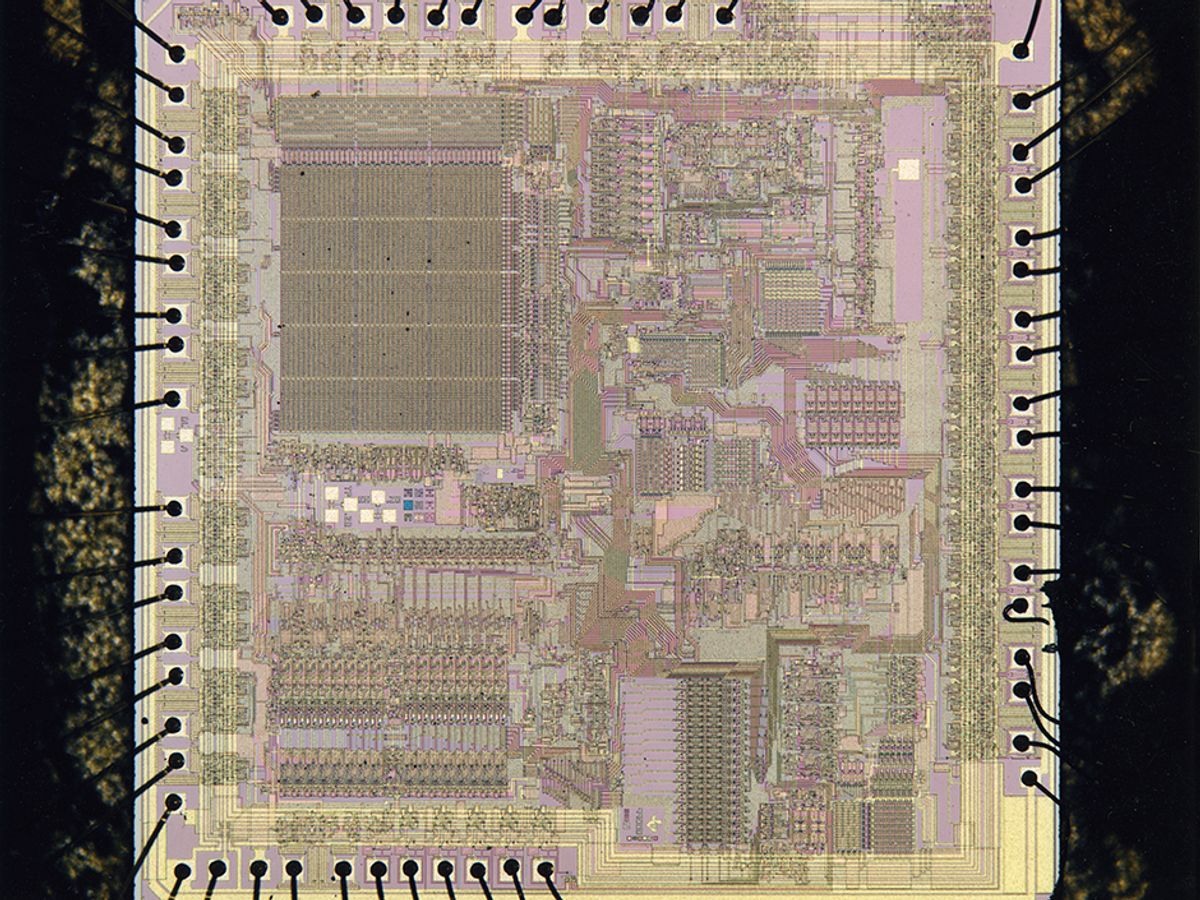TMS9900
Manufacturer: Texas Instruments
Category: Processors
Year: 1976
Rarely does a chip come so close to true greatness, only to see it slip from its grasp. The TMS 9900 from Texas Instruments had a lot going for it. By the early 1970s, TI had recognized that the nascent market for microprocessors—kicked off by the Intel 4004 in 1971—was going to drive a demand for more powerful chips than the 8-bit CPUs then on the market. The company had finally got a handle on the metal-oxide semiconductor technology displacing the early bipolar technology for making integrated circuit transistors. TI had the R&D resources and the marketing muscle to steal a march on the competition.
But the resulting 16-bit processor would miss its chance at the brass ring—being chosen to power the IBM Personal Computer. When “the TMS 9900 emerged in 1976, there were several problems,” wrote former TI Division Manager Walden C. Rhines in his dissection of the chip’s misfortunes for IEEE Spectrum. Two of the biggest: “The 9900 architecture, being the same as the TI minicomputer family, had only 16 bits of address space, the same as the 8-bit microprocessors of the day, and there was a strategic issue that competitors in the electronic equipment industry would be reluctant to endorse the architecture of a company that already had large computer, defense, and consumer product businesses.”
Instead the TMS9900 became the heart of the TI-99/4 and TI-99/4A microcomputers, earning them the distinction of having the first 16-bit CPUs in a home computer. The CPU ran fast too, with a clock speed of 3 megahertz, considerably faster than the 1- to 2-MHz clock speed of competitors like the Commodore 64. A price war with Commodore lead to TI-99/4A gaining significant market share, but at the cost of profitability. The computer might have survived to find a footing, but it was cursed by system design problems over and above any problems with the TMS9900, in addition to TI’s unwelcoming attitude to third-party software developers.
A number of successor chips followed, such as the TMS9995, which found use as an embedded controller, but the line never recovered from its initial stumbles: When it entered the PC market, TI ended up using Intel’s processors.





